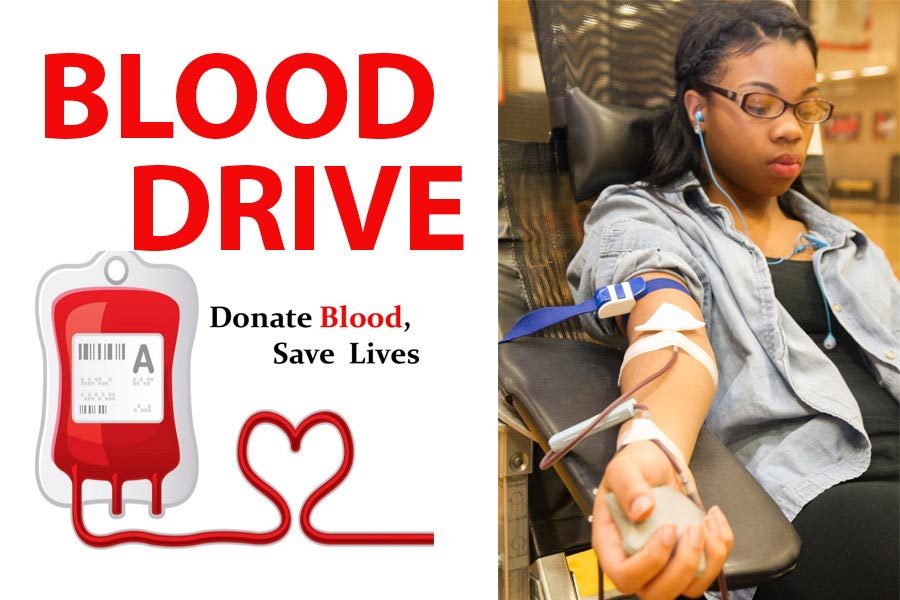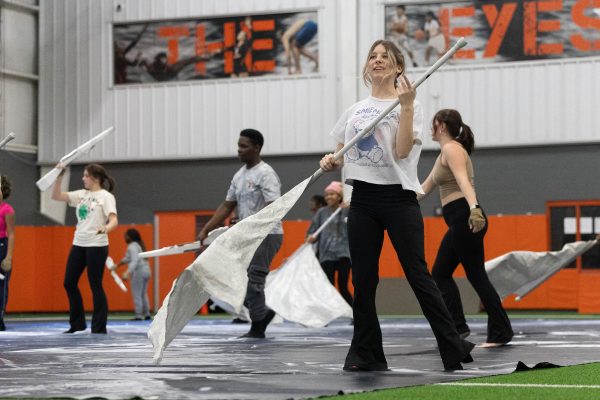Blood drive held Jan. 24-25
Photo illustration.
January 26, 2017
Blood machines whir. Nervous students chatter incessantly. People turn pale with nauseated looks. Nurses and donor service representatives hurry about. These are a few of the things that one can expect to find at a blood drive. On Jan. 24 and 25, students and faculty members had the opportunity to help those in need by donating their blood through Lifeshare Blood Centers.
Giving blood is an invaluable service to hospital patients and those with certain medical conditions. According to the American Red Cross, “every two seconds someone in the U.S. needs blood,” and “a single car accident victim can require as many as 100 pints of blood.”
For some, however, giving blood is even more personal.
“I’m giving blood to save the lives of those who can’t give blood or for the others who are too young,” junior Acealyn Scott said. “My dad has ITP [Idiopathic thrombocytopenic purpura], a rare blood disease, and they had to do a platelet and a blood transfusion two or three months ago. Giving blood really helps people.”
For others, donating blood was simply something they felt was necessary; not for themselves, but for others.
“I was terrified of giving blood,” junior Amber Savage said. “My mom told me it was a good thing to do so I decided to do it to help others.”
For many, giving their blood seems like a daunting task, considering the fact that needles and seeing blood are intimidating for many people.
“I was screaming internally before I came to give blood,” junior Aileen Tran said. “It really freaked me out and I was hysterically laughing during it for some reason. It just really scared me.”
In addition to giving whole blood, which is two components of red blood cells and plasma cells, donors can also supply strictly red blood cells, plasma or even a red cell plasma in which machines automatically split up the red blood cells and the plasma.
“Plasma is 90 percent water, so you can donate a little bit more, and plasma is used to create a scab if you got cut or something,” donor services member Josh Smith said. “The red blood cells are used to help those in critical condition to provide oxygen throughout the body. The whole blood procedure is a lot shorter; it’s basically gravity and a tourniquet around your arm, and it goes straight to the machine which pulls the blood out, but it’s dependent on the person’s flow [of blood] and it’s a little bit quicker, about ten minutes.”
Donors should be wary of their condition before they decide to give blood.
“People with a cold or a seasonal illness like that couldn’t donate,” Smith said. “It’s transfused into patients, and the patients receiving the transfusion may have a damaged immune system, so it’d do more harm than good.”
Despite the fear of needles and blood, potential donors should acknowledge the fact that their blood could be priceless for someone who needs it.
“The impact is that it makes somebody feel like someone cares, that somebody giving their blood actually matters to [the sick person],” Scott said. “You’re not just doing it for yourself; you’re helping others who [could be] dying.”





















